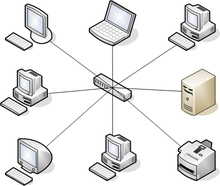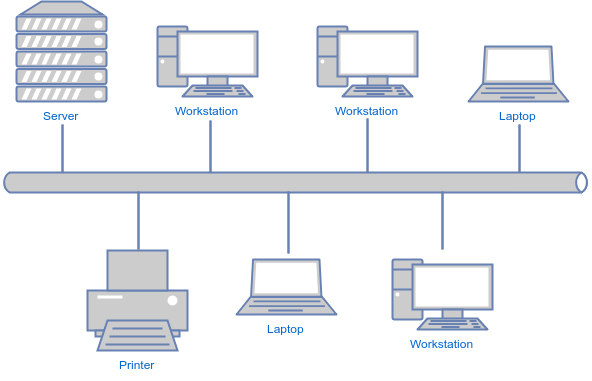#03 Network Topology
Go Back
Star

The most popular of network topologies, every individual network device is connected to a central hub. It sends signals from the device to the central hub which can then connect with the other devices. This star topology is a lot less expensive since it only needs one I/O port but with more hardware such as hubs and switches it gets more expensive. Star topology is both reliable and not reliable, it is reliable since if one cable fails then that means that only that one device fails but there is still a single point of failure of with if the central hub goes down then all of the devices networks will also go down. The topology is robust in nature, if you can connect a device to a central hub then it will work, there is also no disruptions if you add or remove devices. An issue that could arise is if you have lots of devices that need to be connected to the central hub then you may need to buy some more hubs or switches.
Bus

Another network topology is called bus where nodes are put together on a single line, bus topologys are usually used on LANs. Each node (or device) is connected to the wire which is called tapping so it listens on packets. One of the disadvantages of a bus topology is that every bit of data that goes through the central wire can be seen by the other devices which could mean that sensative data that is sent to another pc and be viewed from a different device.